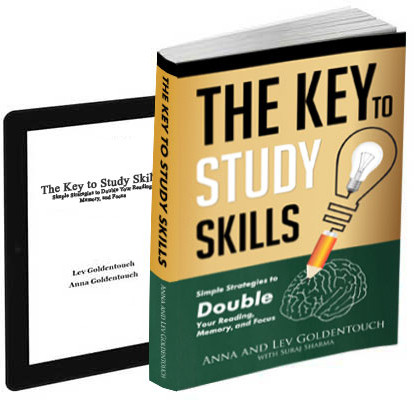Musical memories often stand out as some of the most vivid, emotionally charged recollections we possess. Whether it’s the chorus of a childhood lullaby or a song that played during a major life event, these tunes embed themselves into the fabric of our experiences. One reason musical memories are so powerful lies in how deeply they intertwine with our emotions, development, and identity. Music often serves as the backdrop to significant milestones—first dances, road trips, heartbreaks—and it imprints those moments into our consciousness. As research shows, the music we hear between the ages of 10 and 30 forms an unforgettable soundtrack to our lives, capturing both ordinary and extraordinary events with unmatched clarity. But what exactly makes these memories so enduring and emotionally resonant? Let’s delve into the multidimensional power of musical memories and understand why they remain some of the strongest memories we ever form.
The Reminiscence Bump and the Music of Youth
One of the most fascinating cognitive phenomena is what scientists refer to as the “reminiscence bump” – a period from adolescence to early adulthood when individuals form the most lasting and emotionally intense memories, according to a study by Jakubowski et al. (2020), participants aged 18 to 82 remembered songs most vividly when those songs were popular during their ages of 10 to 30. These songs also triggered the strongest emotional responses and were associated with specific personal events. This age range is full of firsts — first love, graduation, career beginnings — making it fertile ground for emotional attachment.
Researchers believe these formative years are critical because of both external milestones and internal neurological development. Puberty and young adulthood mark significant hormonal, social, and neural changes. The brain’s hippocampus, the region associated with memory, is particularly active and malleable during this time. As shown by Davidow et al. (2016), teens retained more information during memory tasks compared to adults, with stronger hippocampal activity. This makes music encountered during this sensitive window deeply memorable and emotionally charged.
Emotional Tagging and Neurological Encoding
Music has a unique way of activating multiple regions of the brain simultaneously—the auditory cortex processes the melody, the limbic system handles emotional reaction, and the hippocampus encodes the experience into memory. When these components engage together, a phenomenon called “emotional tagging” occurs. This means a specific emotional response is attached to the memory, which in turn makes it easier to recall.
This neurological symphony ensures that a particular “memories song” can transport us instantly to the moment we first heard it. The process is involuntary and often surprisingly vivid. According to the research shared on Key to Study on musical mnemonics, musical structures provide cues and repetition patterns that enhance retention, even for those who struggle with memory otherwise.
The Role of Repetition and Familiarity
Unlike most daily experiences, music tends to be repeated. We listen to a favorite song dozens or even hundreds of times. Each repetition serves to reinforce the neural connections associated with that song. These reinforced pathways mean that the memory linked to the song becomes more durable over time. Whether it’s a graduation anthem or the background music to a first heartbreak, the repetition helps secure the associated moment in long-term memory.
This repetition also leads to the phenomenon of “familiarity bias,” where we develop a preference for music we know well. The more we listen, the more we like it, and the more likely it is to be etched into our memories. This is particularly effective when combined with emotional moments, making the memory-musical bond almost indestructible.
Music as an Identity Anchor
From adolescence through young adulthood, we often use music as a way to construct and express our identity. The genres, lyrics, and artists we gravitate toward usually reflect our beliefs, emotions, and aspirations. As such, musical memories don’t just recall events—they recall versions of ourselves. The grunge phase, the pop obsession, or the classic rock loyalty each represent not just taste but identity development.
Key to Vision explores how music preference links to motivation and personality traits. When we revisit songs from specific life periods, we are also revisiting who we were at that time—our hopes, our pain, our joys. This identity reinforcement is why songs often feel like time machines.
The Memory-Inducing Nature of Lyrics and Rhythm
Lyrics act as linguistic mnemonics, providing structure and rhyme that make them easier to remember. Rhythms and melodies add a layer of encoding that is difficult to replicate with non-musical material. The interplay between language and music creates a song much easier to recall than a paragraph of text.
In fact, memory experts often use song structures for memorization tasks, a technique explored in Key to Study’s article on memorizing music. Whether it’s remembering a grocery list, historical facts, or complex theories, setting information to music can drastically improve recall.
The Emotional Continuum: From Joy to Healing
Musical memories span the emotional continuum. Happy moments are cemented with celebratory tunes, while sad experiences are cushioned with melancholic ballads. Music often becomes an emotional regulator, helping us process grief, loss, or anxiety. This capacity is why music is frequently used in therapeutic contexts.
In Key to Study’s article on music and healing, researchers highlight how music therapy aids in emotional expression and memory recall, especially in patients with cognitive impairments like Alzheimer’s disease. The same principle applies to emotionally intense memories: they are not just remembered, they are re-experienced through music.
Multisensory Associations and Contextual Recall
Songs often become associated with specific places, people, smells, and feelings. This multisensory integration makes musical memories more vivid. For instance, a particular song may instantly bring to mind the scent of a high school gym or the outfit you wore during a summer concert. This contextual richness gives musical memories their sensory depth.
Such associations deepen the memory trace, allowing multiple triggers to activate the same recollection. This is unlike purely verbal memories, which typically rely on a single cognitive route. As described in Smart or Fun’s article on What Is Music For, music enriches our emotional and mental landscape, allowing for these layered experiences.
Cultural and Generational Bridges
Music transcends individual memory and becomes part of cultural and generational identity. Families often share songs that become collective anthems. Communities and nations rally around musical moments—from protest songs to national anthems. This collective memory reinforces individual recollections, giving them a broader societal context.
Children often absorb the music their parents listen to, forming intergenerational musical memories. This explains why children may develop a fondness for bands like The Beatles, Queen, or Green Day simply because they were played in the family environment. Smart or Fun’s article on Food and Music explores how music integrates into daily rituals, strengthening its emotional and social significance.
Musical Mnemonics in Education and Learning
Music isn’t just an emotional tool—it’s a cognitive asset. Educators have long used songs to teach everything from the alphabet to complex historical events. Setting information to a musical structure allows for easier encoding and retrieval.
The KeyToMeaning Guitar Masterclass explores how music can be both a learning tool and a form of self-expression. By teaching guitar through memory-enhancing techniques, the course emphasizes how melody and muscle memory combine to create lasting learning experiences.
Musical Memories and Aging
As we age, music becomes one of the last bastions of preserved memory. Studies have shown that individuals with dementia can often recall and sing along to songs from their youth, even when other cognitive abilities have declined. This highlights the resilience and power of musical memories.
The ability of music to trigger emotional and autobiographical recall makes it an invaluable tool for caregivers and clinicians working with elderly patients. It’s not uncommon for an elderly individual to be unable to recall their address but able to sing all the verses of a childhood hymn. This isn’t magic—it’s the lasting imprint of deeply encoded musical memories.
Social Connectivity Through Shared Playlists
Today, technology allows us to curate, share, and revisit music more conveniently than ever. Playlists have replaced mixtapes, but the intention remains the same—to document, express, and remember. Collaborative playlists on platforms like Spotify or Apple Music allow groups to create shared musical histories. These digital artifacts become time capsules that preserve emotional connections and social bonds.
Our Facebook community frequently shares insights and playlists related to memory techniques, music therapy, and learning strategies. Engaging in such communities fosters a deeper connection with the musical experiences that shape us.
Why Musical Memories Are Unmatched
Musical memories are the strongest memories we have because they engage our brains on multiple levels—neurological, emotional, linguistic, and cultural. They are reinforced through repetition, enriched by multisensory associations, and anchored in identity. They help us learn, heal, connect, and remember.
Unlike fleeting visual or textual memories, music has a staying power that endures the test of time and the erosion of age. From the moment we first encounter a meaningful song, it imprints itself into our consciousness, ready to be recalled at the strum of a chord or the echo of a familiar lyric.
This is why musical memories remain unparalleled in their intensity, clarity, and emotional depth. From childhood anthems to adult favorites, they are the soul’s way of remembering what truly mattered.
So when you find yourself listening to an old tune and smiling, maybe even crying, know that you’re not just hearing a song—you’re reliving a moment frozen in time.
“Musical memories” have always been more than just recollections; they are our soundtracks, echoing through our lives from start to finish.

Get 4 Free Sample Chapters of the Key To Study Book
Get access to advanced training, and a selection of free apps to train your reading speed and visual memory

